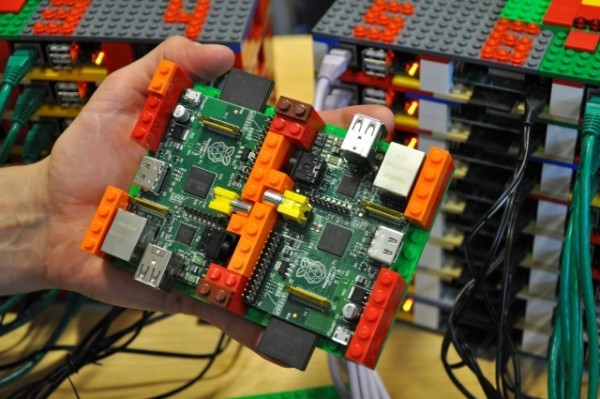A team of scientists at the University of Southampton led by Professor Simon Cox have built a low-cost supercomputer comprised solely of ARM-based Raspberry Pi micro computers. More specifically, the team has combined 64 units to create a parallel computer that has been racked and stacked using none other than Lego building blocks.
The system is called Iridis-Pi after the university’s full-size supercomputer by the same name (sans –Pi, of course). The entire operation cost just north of $4,000 to build but that includes 16GB SD cards for each of the 64 computers. Collectively, the supercomputer has 1TB of storage and 16GB of RAM – all connected using Ethernet switches which weren’t factored into the overall cost to build the system. The entire system runs off a single 13 Amp mains socket.

Cox said his team built the necessary software for the supercomputer over the summer by starting with a standard Debian Wheezy system image. From there, they used a free version of the Message Passing Interface along with code written in Python using Microsoft Visual Studio to perform parallel computing tasks. Naturally, the first thing they did when finishing the supercomputer was to calculate the value of Pi, a well-known first test for any new supercomputer.
Cox has published a step-by-step guide on how to build your own Raspberry Pi supercomputer. Getting your hands on 64 Raspberry Pi computers, however, might be a bit more difficult considering how popular they are.